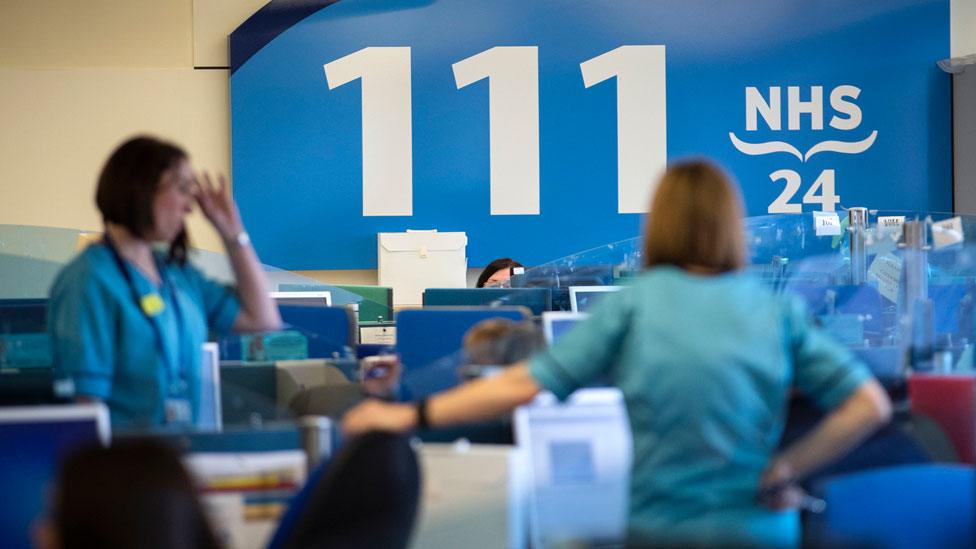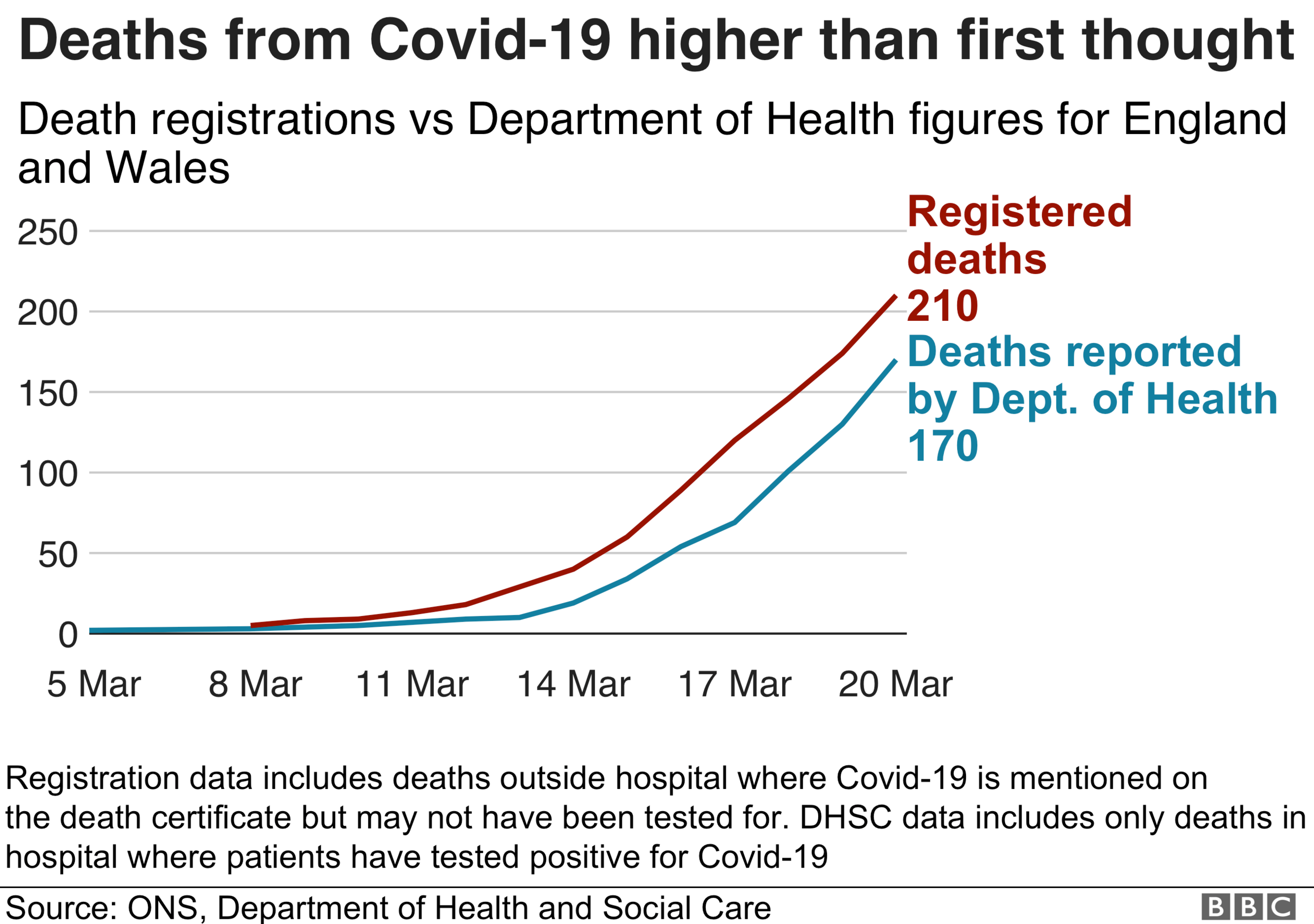Coronavirus: Why the UK death count is an inexact science
- Published
- comments

The Office for National Statistics has released new figures, external on the number of deaths involving coronavirus.
Unlike the statistics we have heard about before now, these include every community death linked to Covid-19 in England and Wales.
According to the data, there were 210 deaths up to 20 March - the day that pubs and clubs were ordered to shut down to help tackle the outbreak.
That is 40 more than the official figure of 170 released at that time.
Why the increase?
The latest data captures more than only the hospital deaths of patients who had tested positive for coronavirus and so definitely had the infection.
It looks at community deaths - people who died at home or in residential care who doctors recorded on the death certificate as probably having Covid-19.

A SIMPLE GUIDE: How do I protect myself?
AVOIDING CONTACT: The rules on self-isolation and exercise
LOOK-UP TOOL: Check cases in your area
MAPS AND CHARTS: Visual guide to the outbreak
VIDEO: The 20-second hand wash

What does that tell us?
Experts have always said there will be more coronavirus deaths happening than those recorded in the hospital data.

Currently, there are not enough tests to check how many people in the community are infected, or how many deaths are linked to Covid-19, the disease caused by coronavirus.
So while these provisional new community figures are important to collect and analyse to help better understand Covid-19, they can't shed much light on the true toll.
For now, the daily government figures on hospital deaths are still the most accurate measure that we have of the outbreak and how the NHS is coping.
Why do they only go up to 20 March?
It takes at least five days for most deaths to be certified by a doctor, registered and the data processed, meaning the figures are always slightly out of date.
There will be weekly updates from the ONS about hospital and community coronavirus deaths, which will allow experts to start looking at the figures to track the disease outbreak.
Do they tell us anything else?
The data shows what experts have been telling us - that some people are at higher risk of complications. That includes people over the age of 70 and those with underlying health conditions.
While everyone is being advised to keep their distance from other people to help stop the spread of coronavirus, some people with underlying health conditions need to take even more precautions to protect themselves.
More than 1.5 million people most at risk of needing hospital treatment if they catch coronavirus are being asked to stay at home to shield themselves.
- Published16 April 2020
- Published28 March 2020
